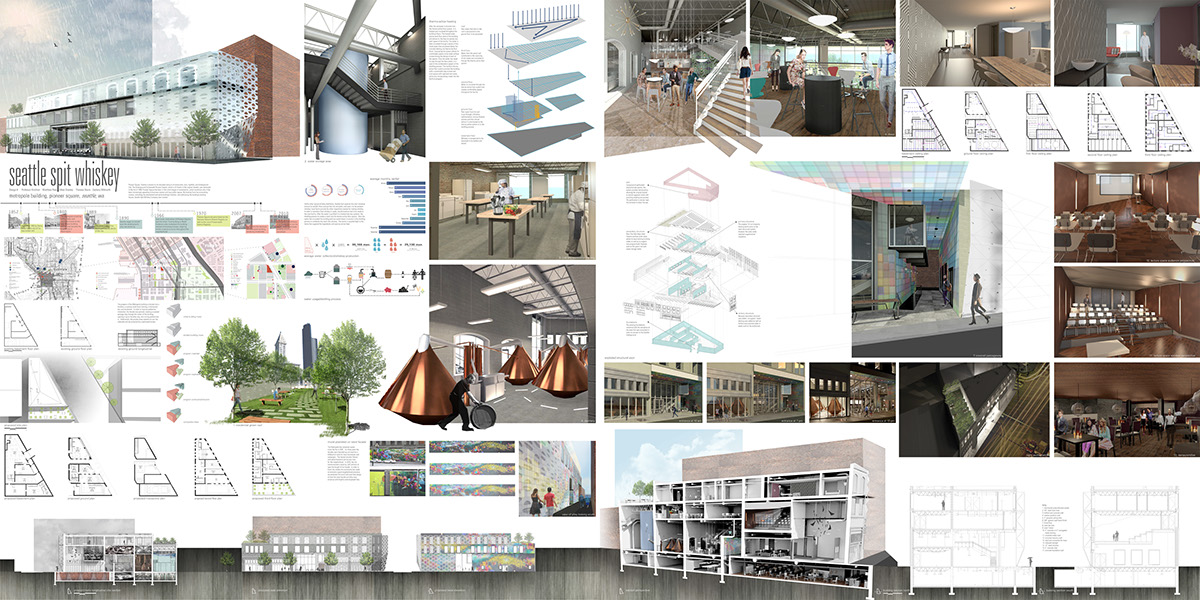
Pioneer Square, Seattle is known for its abundant amount of restaurants, bars, nightlife, and Underground City. The Underground City beneath Pioneer Square, which is 31 blocks of the original Seattle, was destroyed in the fire of 1889. Pioneer Sqaure has been in the initial stages of revitalization, which reinforces why it has been increasingly appealing to business owners and new public spaces. By drawing from the surrounding context, reworking the abandoned metropole building’s function, and addressing the building’s existing facade, Seattle Spit Whiskey Company was created.
Unlike other typical whiskey distilleries, Seattle Spit captures the city’s immense amount of rainfall, filters and purifies the rainwater, and uses it to the produce whiskey. Local farms provide the other ingredients needed for making whiskey. In order to transform how whiskey is made, transformations had to be made to the new facility. After the water is purified it is diverted into two systems: the distilling process to create a mash and the thermo-active floor system. Once the water has circulated the building and has cooled down, it returns to the distilling process to condense the mash into whiskey. The waste is recycled back to the farms that supplied the ingredients and used as animal feed.
After the rainwater is diverted into the thermo-active floor system, it is heated and circulated throughout the building’s floors. The heated water warms each floor plate of the building and allows for the heat to radiate into each space of the facility. The water is then circulated through a series of thin metal pipes that are placed above the concrete decking, but below the floor finish. Concealing the system allows for comfortable spaces to be made without compromising the design of each of the spaces. Once the water has made its way through the floor plates, it is used in the condensation aspect of the distilling process. The facility’s thermo-active floor system provides the building with a sustainable way to heat and cool spaces with captured rain water, while also incorporating it back into the facility’s program.
